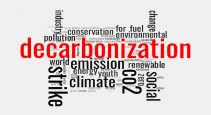Sustainability
IAQ combos arresting airborne spread of COVID
Commercial building operators could use a combination of air exchange, filtration and purification to comply with the industry-leading guidance for arresting airborne spread of pathogens and contaminants.
Canada’s clean energy efforts garner plaudits
The International Energy Agency commends Canada's targets and policies for reducing greenhouse gas emissions and identifies it as a potential key player in the transition to low-carbon energy sources
Climate change and ESG pervade CRE projections
Climate change is more ominous than the spectre of regulations and taxes for a small majority of commercial real estate leaders responding to REALPAC’s recent survey of their expectations for the next decade.
Subpar waste diversion trails Ontario target
About 85 per cent of waste from Ontario's businesses, public institutions, residential buildings with six or more units and construction/demolition sites ends up in landfill, including a vast amount of recyclable material.
Rare decisions have acute carbon consequences
Daily vigilance is central to achieving operational energy savings, but rare decisions typically have the most acute carbon consequences in buildings.
Environmental mishaps herald personal liability
Personal liability is a mounting possibility for directors, officers and supervisors of organizations that run afoul of environmental regulators or are on the losing side of civil litigation.
Accessibility carries a simple business case
Many commercial real estate operators are making the simple business case for buildings that are functional for all potential users. It’s a quest that can begin with simple investigations, simple low-cost measures and simple mindfulness.
Real estate could reap climate action dividends
The global urgency for climate action has an upside companion in global opportunities for strategic investment that could improve people’s lives and yield sustainable returns.
How to provide healthy environments & meet climate goals
Three key lessons for making buildings energy- and carbon-efficient and healthy.
A fine-tune for effective benchmarking
The 2021 versions of REALPAC's normalization methodologies for calculating energy- and water-use intensity address issues arising from the COVID-19 pandemic and lower occupant densities in office buildings.
Status quo stymies innovative retrofit options
Prevailing approaches for incentivizing, financing and implementing retrofit projects deemed unlikely to propel the existing building inventory to net-zero emissions by 2050.
Retrofit funds tied to equity capital prereq
Retrofit proponents unable to contribute at least $6.25 million in equity capital will have to look to third-party interveners in order to tap into the Canada Infrastructure Bank’s $2-billion fund for commercial buildings.
Reaching net zero in the age of COVID-19
Optimizing ventilation and air handling systems is key to achieving net zero energy performance goals.
Heat is on for electricity demand projections
Electricity demand projections through the vaccination rollout period should take two contradictory factors into account, energy management specialists affirm.
Parsing Ontario’s electricity cost allocation
After a year of operational upheaval and more modifications to electricity pricing policies, BOMA Toronto’s annual workshop to address the complexities of the global adjustment had a lot of ground to cover.
Securities regulators scrutinize ESG investing
Securities regulators wish to confirm that the representations registrants are making about the incorporation of ESG principles in their investment decision-making processes are consistent with their actual policies and procedures.
How schools are boosting air quality measures
The report found that schools have prioritized ventilation and filtration to reduce the transmission of the virus.























